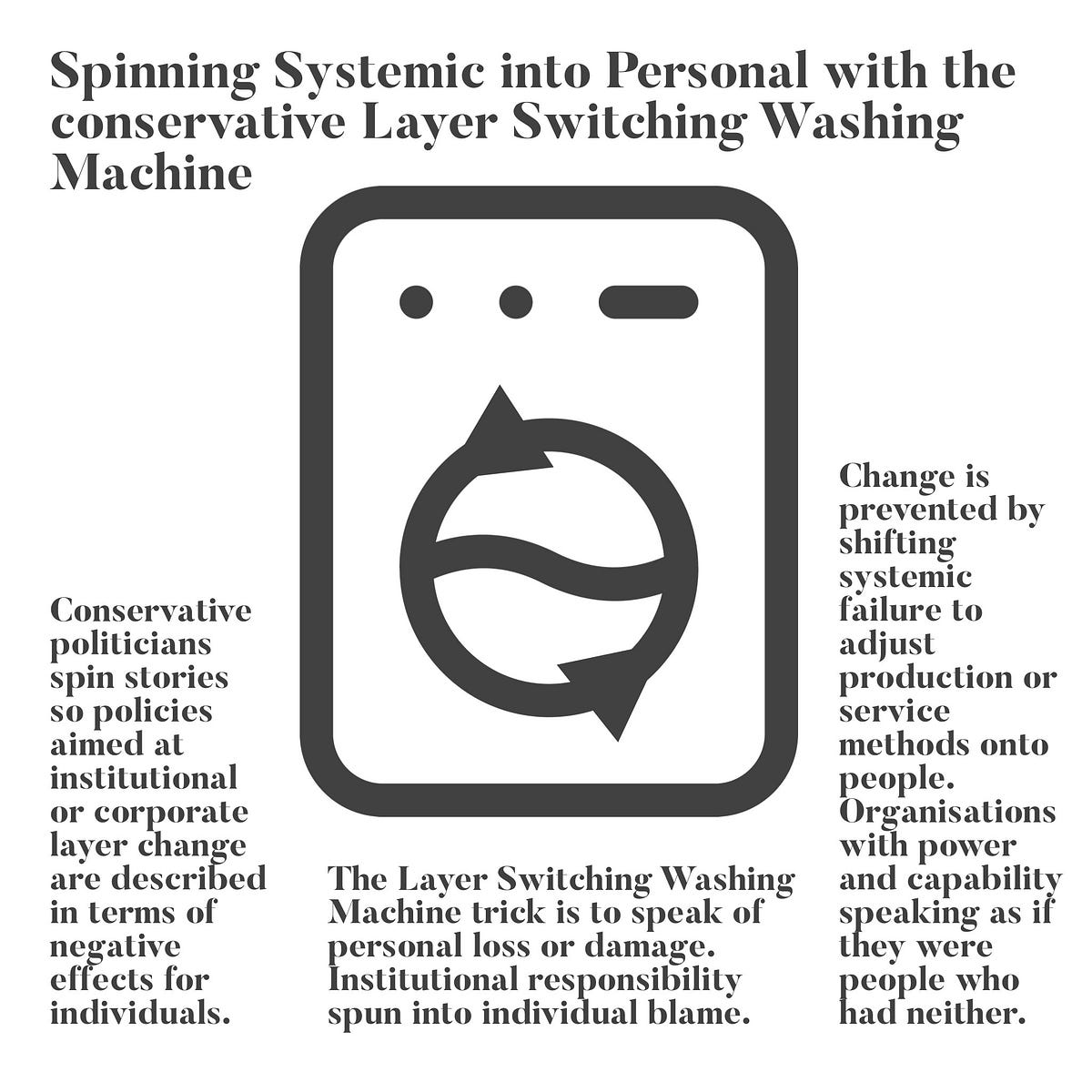
It is the political party conference season in the UK. Each party gets a week to meet up and get media attention for their policies (especially important this year with a General Election due in 2024).
The Conservative Party has spent some time preparing with announcements that cut back Climate Crisis policies and cancel pro-Net Zero infrastructure projects.
What is most obvious is how all these changes are framed in terms of individuals and their stories. How the Ultra Low Emission Zones punish a low income driver. How Net Zero affects the cost of one person’s shopping basket.
System layer policies framed as individual layer punishments.
This is an old conservative trick. The narrative washing machine that spins institutional layer issues into individual layer stories.
Corporations avoid having to change their systems by moving the narrative away from them paying for change, for which they have both the capital and capability to do, to thousands of people who have neither power nor money.
It’s a sticky form of story
The repeated success of this narrative is visible in the vast profits of fossil fuel companies and the decades of failure to change production patterns. Meanwhile, thousands of people are sorting plastic box from plastic sheet to prevent climate change.
The stories are sticky.
Journalists and the media like personal stories because people like to read and hear them.
System scale stories are hard to tell.
The scales are vast in time and space. The numbers jump from comprehensible to incalculable. The complexities swirl outwards.
Personal is easier to concentrate on.
Personas and systemic design
This bias affects designers too.
Talking of systems and services is hard. Maps and diagrams are used to show some of the parts but choices are made about what things need to be excluded or ignored.
There is also a powerful design tool that is problematic.
The persona.
Personas are used to reframe what the organisation is designing as an output into something that a person needs or wants. Personas are formed from market and user research to justify the product or service existence.
Personas are another form of the Layer Switching Washing Machine.
Telling user stories and sketching persona types are the same shift from systemic to individual. They have the same narrative power on managers within organisations as media articles about specific people do have on parties.
It’s the same shift because it is such a powerful narrative method.
Systemic change blocked by Personas?
However, this can be a problem.
I’ve spent a few months working on development of workshops and tools for talking about systemic change in the climate crisis. I was asked to use the UK’s Design Council’s new framework and toolkit to do so.
One of the changemaker roles in that framework is the Systemic Thinker. I still find this a really hard role to decribe in skills or behaviours. Someone who can shift layers and move from vast to small scales. It’s a really important role but how we help people recognise their capacities and build their capabilities to do it is still a question.
The difficulty of the role is also perhaps sabotaged by tools like Personas. The design processes and the product management systems are captivated by user stories and personas. The individual layer remains the focus layer because it is the narratively strongest layer.
How to talk and tell stories about systemic problems is, like the skills, another area that needs development.
Do we change the stories we tell or help more people have the skills to understand what they are hearing?
Stories are how humans sort out what they perceive but it is too easy to stay with the individual stories when we face systemic problems.